Next weekend is the block island race, with most of the crew for the transatlantic race aboard.
A brief intermission to watch the volvo inshore race off ft. Adams.
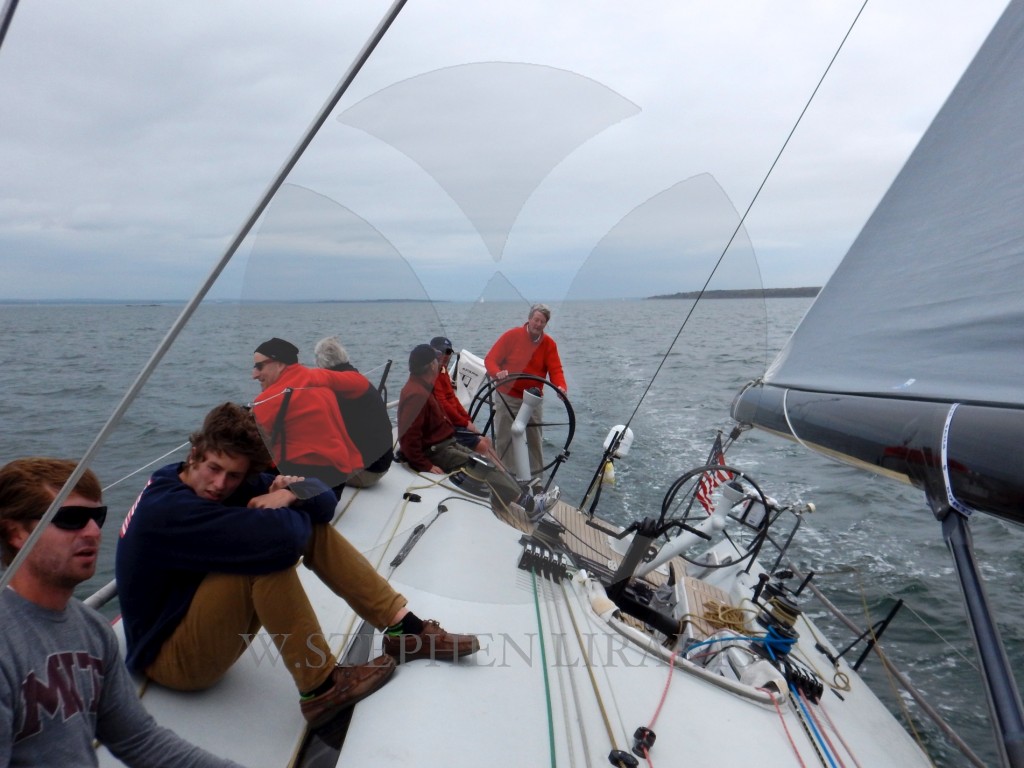
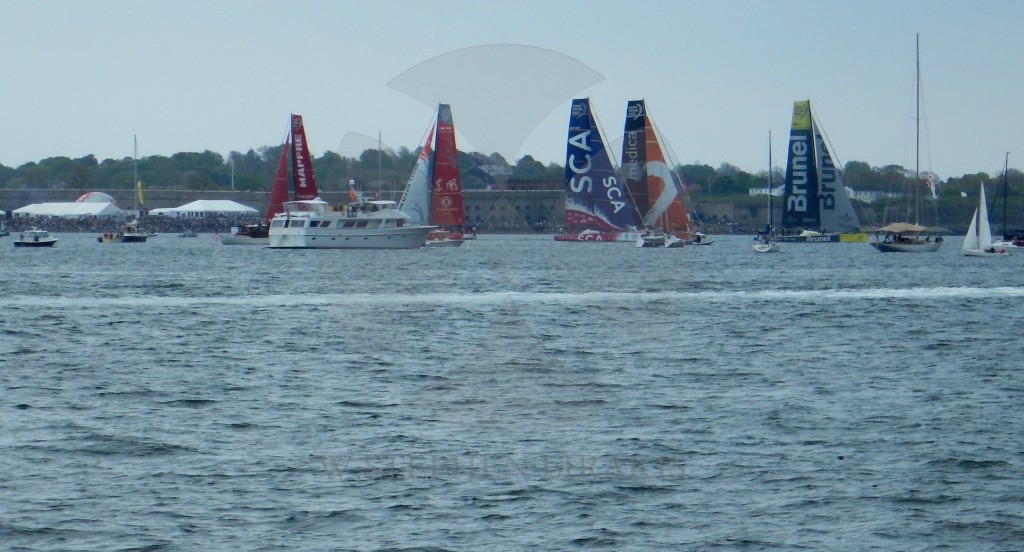
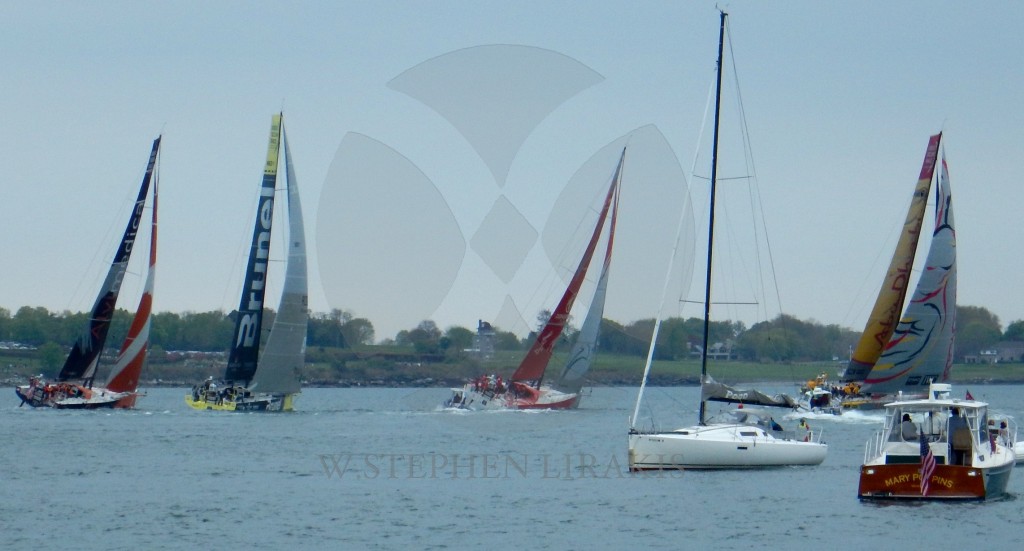
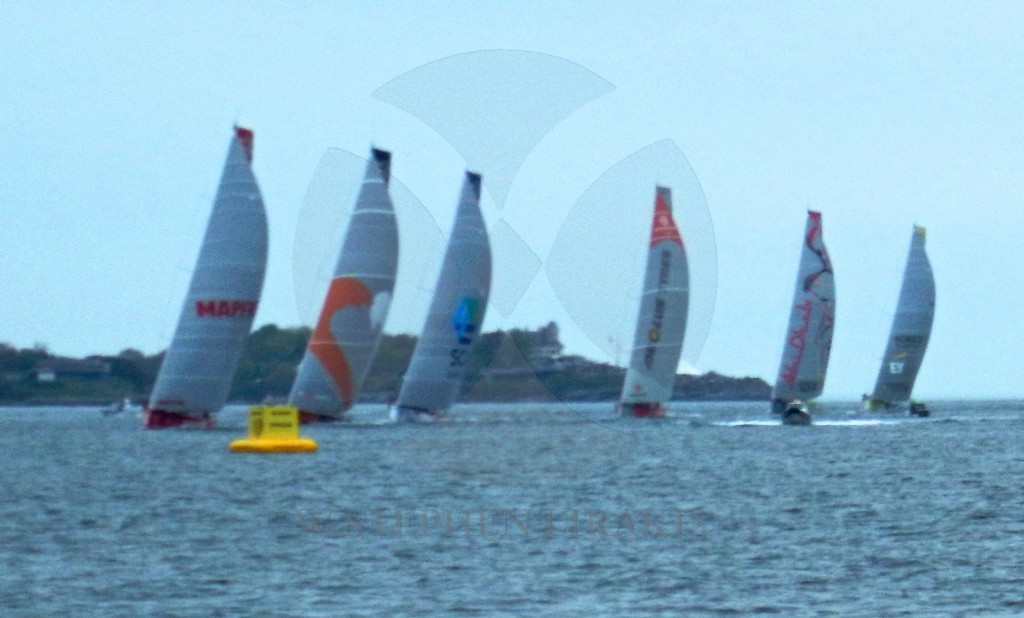

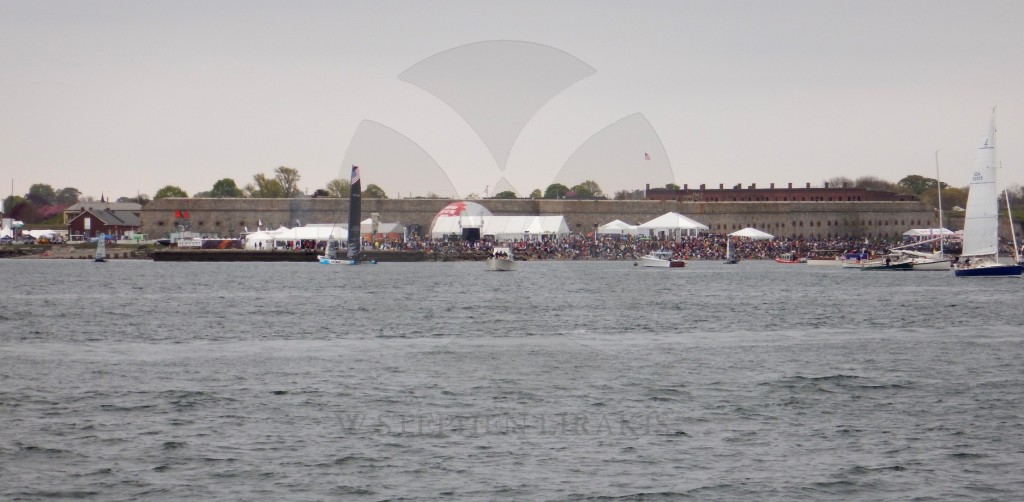 FT. ADAMS CROWDS
FT. ADAMS CROWDS
HARD SAILING IN THE SOUTHERN OCEAN. IT IS WHAT YOU SHOULD EXPECT.
click: HERE FOR THE FULL REPORT
This is perhaps the most complete and interesting document. What jumps out at me is the part about digital charts. I have had a number of conversations over the last 10 years about the accuracy of digital charts. And the description of the consequences of a crash jybe. ( which is encouraged by the quick stop rescue system)
In the end an abundance of caution, which might be classified as seamanship.
Anyone who has been watching the weather knows that February has been an “Epic” month in the Northeast. The loss of the “Bounty” comes to mind; where the skipper thought he could outrun a hurricane in a boat capable of 6 knots in the best of conditions.
The first question is perhaps: who would leave given the weather forecast? The same question for the “Bounty”.
The unshaven, exhausted, uninjured team were holed up, incommunicado, for three days in the remote archipelago after their boat ran into the reef on Saturday afternoon at 1510 UTC.
“I’m really disappointed of course,” said Chris Nicholson, their 45-year-old skipper from Australia, shortly after arriving at dockside in Mauritius.
“On the other hand, we have to realise how fortunate we are for everyone to be here in one piece, and to be healthy. It’s pretty amazing, so there’s a lot of emotions at the moment.”
“The past four days have been very challenging for all of us, and I am extremely proud of the whole crew’s professionalism, composure, and endurance.
“It’s clear that human error is responsible for the shipwreck, there’s no avoiding that. And as skipper, I take ultimate responsibility.”
They had smashed into the coral rock at 19 knots – the equivalent of 35 kilometres an hour – in their 65-foot boat, spun 180 degrees and crashed to a halt, grounded on the reef.
They remained on the reef until the small hours of the following morning, before abandoning the boat in pitch darkness and wading in knee-deep water to a dry position on the reef, led by Nicholson – aka Nico.
A small boat from the local coastguard then took them early on Sunday to a small islet, Íle du Sud, which is known as a favourite with shark-watching holiday-makers.
Their blue vessel, caught underneath breaking waves, is badly damaged, but the crew decided to remain for an extra 24 hours to complete a clean-up operation around the area.
“The bad things had to come off,” said the skipper, having just stepped off the local fishing boat, ‘The Eliza’, that transported his crew back to the mainland.
“We had a clear list of removing that equipment, and once we had all those off the boat it came down to removing things that were expensive.
“We’ve done a really good job in clearing it all up.”
Experienced New Zealander sailor Rob Salthouse was also keen to focus on the positives.
“It’s just good to be back on dry land,” he said.
“I think the team has grown strong with what we’ve been through.”
Danish sailor Peter Wibroe, white shirt stained yellow by sand, sweat and sea salt, was full of admiration for his leader.
“I must say that the team worked really well together, especially Nico, the skipper, who led the whole situation in a very professional way.
He continues. “We all felt extremely safe despite the situation.
“We were conscious about what was going on and we all had our responsibilities.”
“We worked really well as a team, and that’s why we’re all here today.”
This is in response to those who asked:”Who are you?” It is a least a dimension.Boats have always been a part of my life. Naturally interwoven with the story of Newport.
If only we had had these items on the 12 meters. ( I had made an opening pre feeder by hand) I had tried to have other items made but just could not get them done.
June 25, 2014
All Possible Assistance: A Classic Escorts a Competitor to Safety
Black Watch is hard to slow down, but she had to do it during her unusual assignment in the 2014 Bermuda Race. (Daniel Forster/PPL)
By John Rousmaniere and Chris Museler
Hamilton, Bermuda, June 25. With their big fleets, Newport Bermuda Races usually have a few retirements. This year is no exception, with 10 teams dropping out mostly due to relatively small but nagging gear failures, constraints on the crew’s schedule, or (to quote one competitor) “lack of forward progress.” But also this year, a threat of serious damage led to an extraordinary response.
Halfway into the race, the bottom bearing of the rudder broke on the Taylor 41 Wandrian, a Class 3 entry hailing from Halifax, Nova Scotia, and sailed by Bill Tucker and eight other Canadian sailors. Tucker put a secondary “dam” in place to hold out the water. The crew cut out the bottom of a bailing bucket, split the remaining bucket in two, secured the two pieces around the rudder post with 4200 adhesive, finished off the dam with silicone to fill remaining the cracks and holes—and crossed their fingers. The fiberglass tube holding the post might well shake so badly that it would crack wide open.
Taylor succinctly described the danger after the boat pulled up to the RBYC pier on Wednesday morning: “Our challenge was this: if the rudder post broke, we’d have a 6-inch hole in the bottom of the boat.” All this 300 miles from the nearest shore.
Deciding to continue on to Bermuda and request assistance from another vessel, Tucker made calls over VHF radio at 12:30 p.m. EDT this past Sunday, June 22. Due to a weak connection, the transmission was not ideal, but his message was heard by Rocket Science, a Class 4 entry owned and sailed by Rick Oricchio. He then established a radio watch to check in regularly with Wandrian, and got in touch with the race’s Fleet Communications Office. Based in a room in the New York Yacht Club in Newport, and chaired by Newport Bermuda Race Communications Officer Chris McNally, the FCO maintains a continuous 24-hour watch on the race until after the last boat finishes, using radio and the race tracker.
Her details epitomize integrity. (John Rousmaniere)
As the FCO learned of Wandrian’s problems on Sunday afternoon, so did the crews of two other boats less than 5 miles away. They happened to be two classic wooden yachts designed by Sparkman & Stephens: the 68-foot 1938 yawl Black Watch, commanded by John Melvin; and the 52-foot 1930 yawl Dorade, whose owner and skipper is Matt Brooks.
Black Watch’s afterguard—Melvin, navigator Peter Rugg, and watch captains Lars Forsberg and Jamie Cummiskey—decided that their larger vessel was best qualified to stand by and escort Wandrian to Bermuda. “If the boat has to be evacuated and someone else needs to take eight or nine people aboard, we should be there,” Rugg later explained. “This is the stuff that’s important to the sport.” Added Melvin, “Dorade came over when we came over, and we decided we were the better platform to take people off.” The decision to render all possible assistance to another vessel in difficulty came easily for Melvin, who well understood Wandrian’s situation: “I sailed a little Concordia yawl for a long time and I know what it’s like to have everybody pass you and leave you alone.”
Dorade continued racing while her big cousin began the voyage in her new role as Wandrian’s shadow. The two crews engaged in hourly radio communications, with regular reports to the race Fleet Communications Office. Meanwhile, Black Watch’s sailors wrestled with an unfamiliar seamanship problem: how to sail slowly enough to shepherd a smaller boat. “In a good breeze, we can easily do 9 knots, even in rough water,” Rugg said after they reached Bermuda. “We spent a lot of time figuring out how to sail near her. We kept putting sails up and taking them down.”
Back from the sea, Wandrian is also back to normal as she waits to be hauled in Bermuda. (Chris Museler)
Experimenting with sail combinations, they settled on a full or reefed mainsail, the mizzen, and a forestaysail that could be trimmed to windward to slow the boat by heaving-to. The crew also employed the abrupt slowing maneuver called the “Crazy Ivan,” made famous by the film The Hunt for Red October. In the frequent calms, the two boats doused headsails and turned on engines. The sight of two such different sailing yachts powering side by side so far out in the ocean befuddled their competitors.
This shepherd-and-sheep relationship continued until the two boats neared St. David’s Head in the early hours of Wednesday and Black Watch sailed across the finish line at 2:22 a.m. Wednesday morning, nearly two and a half days after her crew volunteered for this remarkable assignment.
Later on Wednesday, as Wandrian was being prepared to be hauled out for repairs, Tucker paused to point to Black Watch and declare, “They were our insurance policy.”
“Geronimo” has been updated for Thomas Coville. Olivier de Kersauson set the bar high with “Geronimo” some years ago; setting records everywhere he sailed.